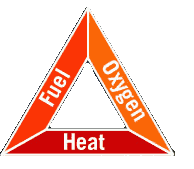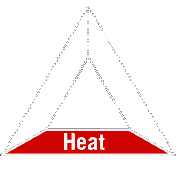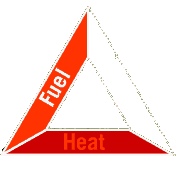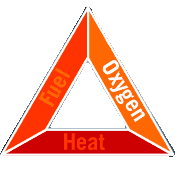|

|
|

|
|

|
| The
interaction of the three equal sides of the fire
triangle: heat, fuel
and |
|
oxygen, are
required for the creation and maintenance of any fire.
When there is |
| not enough
heat generated to sustain the process, when the fuel is
exhausted, |
| removed, or isolated, or
when oxygen supply is limited, then a side of the
triangle |
| is broken and the fire is
suppressed. |
|
|
|
|
|

|
 |
|
The heat source is
responsible for the initial ignition of wildland fire,
and heat |
| is also needed
to maintain the fire and permit it to spread. Heat
allows fire to |
|
spread by removing the
moisture from nearby fuel, warming surrounding air, |
| and preheating
the fuel in its path, enabling it to travel with greater
ease |
|
|
|
|
|
|
|

|
 |
|
Fuel could be defined as any
kind of combustible material, and is characterized |
| by its
moisture content, size and shape, quantity, and the
arrangement in which |
|
it is spread over the
landscape. The moisture content of any fuel will
determine |
| how easily
that fuel will burn. |
|
|
|
|
|
|
|

|
 |
|
Air contains about 21%
oxygen, and most fires require at least 16% oxygen |
| content to
burn. Oxygen supports the chemical processes that occur
during a |
|
wildland fire. When fuel
burns, it reacts with oxygen from the surrounding air |
| releasing heat
and generating combustion products (i.e. gases, smoke, |
| particles).
This process is known as oxidation |
|
|
|
|
|
|
[ Back
]
|
|
Information / graphics
from www.smokeybear.com |
|

|